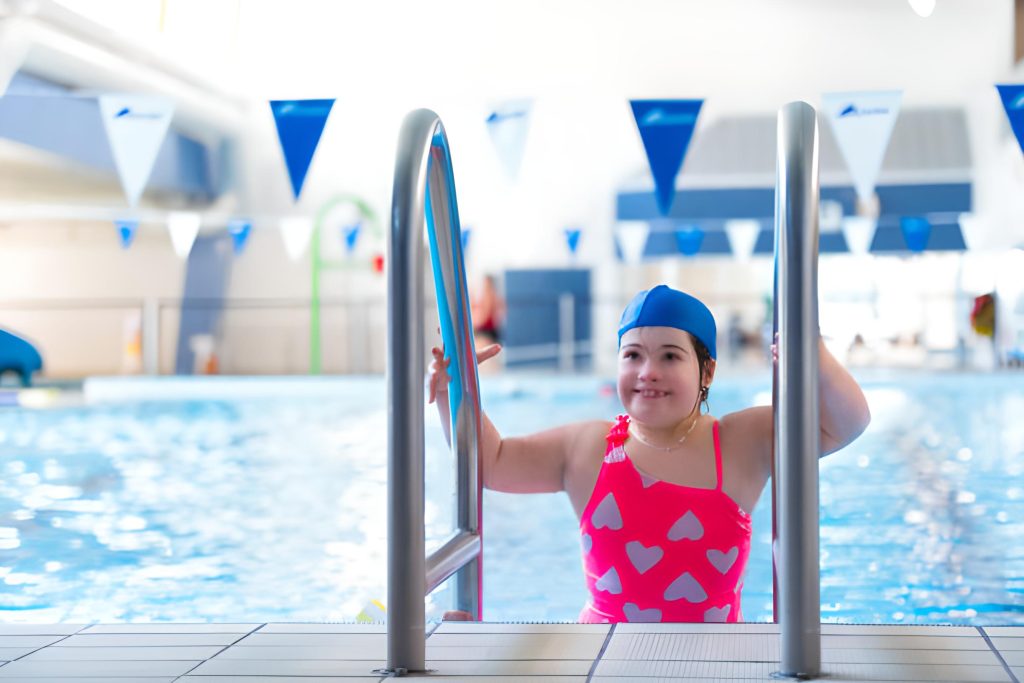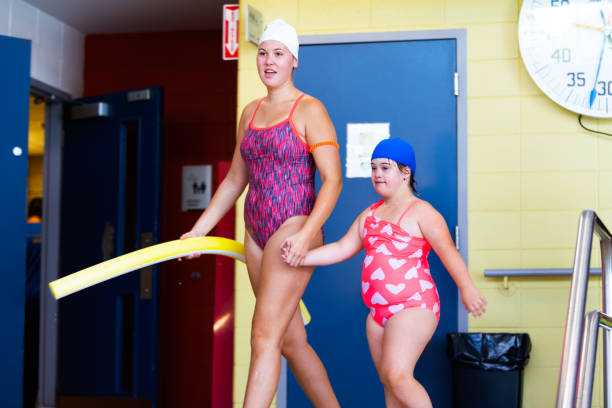Getting Your Autistic Child Ready for Their First Swimming Lesson

Familiarize your child with the pool and the water
If your child has never been to a pool before, it’s important to introduce them to the environment and help them become comfortable with it. You can do this by visiting the pool during non-lesson times and allowing them to splash around and get used to the water. You can also show them pictures or videos of people swimming to help them understand what they will be doing.
- Visit the pool during non-lesson times: Take your child to the pool during times when there are no formal lessons or crowds. This will allow them to explore the pool and get used to the environment at their own pace.
- Allow your child to splash around: Let your child play and splash around in the shallow end of the pool. This will help them become familiar with the sensation of being in the water and help them feel more comfortable.
- Show your child pictures or videos of people swimming: If your child has never seen anyone swim before, it can be helpful to show them pictures or videos of people swimming to give them an idea of what they will be doing in their lesson.
- Use sensory toys: Sensory toys, such as pool noodles or foam letters, can be a fun way for your child to explore the water and become more comfortable with it.
- Practice pool safety: It’s important to teach your child basic pool safety, such as how to enter and exit the pool safely. Show them where the stairs or ladder are and demonstrate how to use them.
By taking the time to introduce your child to the pool and the water, you can help them feel more comfortable and confident in their first swimming lesson.
Use visual aids to communicate expectations
Autistic children often benefit from visual aids, such as pictures or videos, to understand what is expected of them. Use visual aids to show your child what they will be doing in their lesson, such as floating on their back or kicking their legs. You can also use visual aids to demonstrate proper pool safety, such as showing them how to enter and exit the pool safely.
Use pictures or videos to demonstrate specific techniques: Show your child pictures or videos of people swimming and demonstrate the specific techniques they will be learning, such as floating on their back or kicking their legs.
Use diagrams or charts to show the progression of the lesson: Create a simple diagram or chart that shows the progression of the lesson, starting with the basics and gradually building up to more advanced techniques.
Use visual schedules: Visual schedules can be helpful in showing your child what to expect during the lesson. You can create a simple schedule using pictures or words to show the steps of the lesson, such as changing into swimsuits, listening to the instructor, and practicing specific techniques.
Use social stories: Social stories are detailed, written descriptions of a specific situation or activity that use simple language and accompanying pictures to help children understand what to expect. You can create a social story specifically for your child’s swimming lesson to help them understand what will happen and how to behave.
By using visual aids to communicate expectations, you can help your child better understand what they will be doing in their swimming lesson and feel more prepared and confident.
Choose the right instructor

It’s important to find an instructor who is experienced and understanding of the needs of autistic children. Look for an instructor who has experience working with children with special needs and who is patient and encouraging. Communication with the instructor beforehand can also be helpful in setting expectations and addressing any concerns.
Practice at home
You can help your child become more comfortable with the water by practicing at home. You can do this by filling the bathtub or a small pool with water and allowing your child to splash around. You can also practice basic swimming techniques, such as blowing bubbles or kicking their legs, in a shallow area.
Gradually increase the length of lessons
It’s important to take things slow and not overwhelm your child with a long lesson. Start with shorter lessons and gradually increase the length as your child becomes more comfortable. This can help them feel more successful and encourage them to continue with future lessons.
Overall, the key to helping your autistic child feel comfortable and successful in their first swimming lesson is to prepare them beforehand and go at their pace. By familiarizing them with the pool and the water, using visual aids to communicate expectations, choosing the right instructor, practicing at home, and gradually increasing the length of lessons, you can help your child feel confident and have a positive experience in the pool.